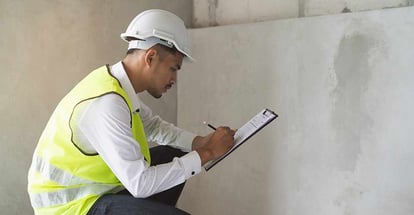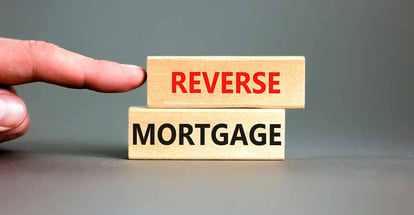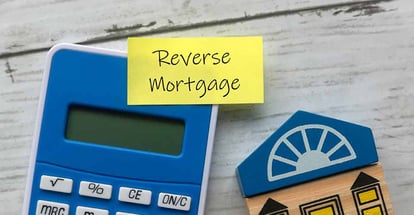What is a Mortgage Insurance Premium and How Does it Work?
The Federal Housing Administration was founded in 1934 to help support a flailing housing industry while helping homebuyers who were unable to meet the terms of traditional mortgages.
Today, the FHA continues to assist borrowers unable to meet the 20% minimum down payment to take out a conventional mortgage.
Depending upon their credit score, borrows can obtain an FHA loan for as little as 3.5% down. But what does this mean to lenders? In turn, what does that mean for the borrowers?
It's all about risk
At one time, the value of the home was sufficient to protect the lender from significant financial loss in case the borrower defaulted.
Unfortunately, the economic crisis resulting from the burst housing bubble in 2006-2008 forced lenders to reconsider loan practices.
In order to protect itself from catastrophic losses in the future, the FHA, which backs the loans, now mandates Mortgage Insurance Premiums, or MIP's.
How does it work?
Mortgage Insurance Premiums come in two parts. First, the UFMIP, or Up Front Mortgage Insurance Premium is paid at closing.
Next, the AMIP, or Annual Mortgage Insurance Premium is calculated annually and divided into monthly payments.
The payments are collected by the lender and forwarded to an escrow account established for HUD by the Department of the Treasury.
How much do you have to pay?
As part of the closing process, the you, the borrower, must pay 1.75% of the base loan amount to the lender. This amount is over and above the down payment.
Stated in dollars and cents, this means that closing costs will increase $1,750 for each $100,000 borrowed. On a $180,000 house at 3.5% down, for example, you would pay $6,300 down leaving a loan amount of $173,700.
The UFMIP will then be $3,037.75, which will be added to the closing costs. The FHA also allows you to finance the premium by adding it to the loan amount so that you can pay it off over time.
In the case of refinancing existing FHA loans, the 1.75% will also apply. For FHA Streamline refinancing, the UFMIP is 0.55%.
The AIMP calculations are very complex. The cost is recalculated annually and then charged monthly with variations based on the loan amount, the term of the mortgage (15 or 30 years) and the current loan-to-value ratio. The annual amount will be between 0.45% and 1.05%.
In the example above, the annual amount would be between $781 and $1,824 translating to a monthly cost of between $65 and $152.
For a thirty-year mortgage of under $625,500 with a loan-to-value of 95% or less, the annual MIP will be 80 basis points, or 0.80%.
For the same mortgage with a 15-year term, the MIP will be 45 basis points, or 0.45%. Reducing the risk to the lender equates to a reduction in rate.
What's in it for you?
It may seem frustrating that you have to pay these additional amounts to protect the federal government in case you default on your mortgage.
After all, MIPs don't offer any protection to the buyer. On the plus side, these provisions mean that you can qualify for a loan more easily while putting considerably less than the normal 20% down. The 3.5% down plus 1.75% UFMIP totals 5.25%, for a reduction of 14.75%.
Lenders are more willing to lend money to buy or refinance a home when their risk is reduced by FHA backing. On the negative side, in addition to increased closing costs, you will still be required to pay an annual insurance premium, which increases your monthly payment.
The AMIP will continue for the life of the loan.
What can you do to lower MIP costs?
You may be able to finance your home with a conventional mortgage. If you are unable to pay the standard 20% down, you may still qualify but will probably have to pay private mortgage insurance. PMIs have different costs and rules.
One significant difference is that PMIs may be canceled after you have achieved 20% equity, depending your loan agreement. It makes sense to compare specific rates before you finance.
Another option is to borrow from your 401K to meet conventional loan requirements. Remember that this option has its own pros and cons that can make it less attractive than you may initially think. It's critical that you investigate plan rules before you decide on this option.
Finally, you can reduce the amount of the loan by putting more money down than required and by paying more than the minimum payment each month on your home. For the latter, you will need to make sure there are no early payment penalties associated with the loan.
In a nutshell, MIPs offer assurances to the lender to mitigate the risk of default by the buyer, opening up opportunities to buy a home.
With over 50 years of mortgage industry experience, we are here to help you achieve the American dream of owning a home. We strive to provide the best education before, during, and after you buy a home. Our advice is based on experience with Phil Ganz and Team closing over One billion dollars and helping countless families.

About Author - Phil Ganz
Phil Ganz has over 20+ years of experience in the residential financing space. With over a billion dollars of funded loans, Phil helps homebuyers configure the perfect mortgage plan. Whether it's your first home, a complex multiple-property purchase, or anything in between, Phil has the experience to help you achieve your goals.


 By
By  Edited by
Edited by 






